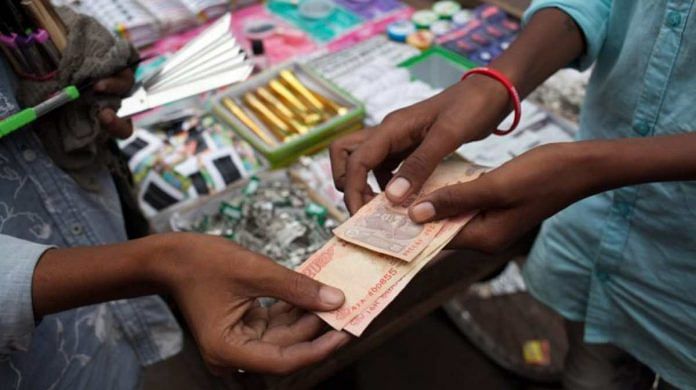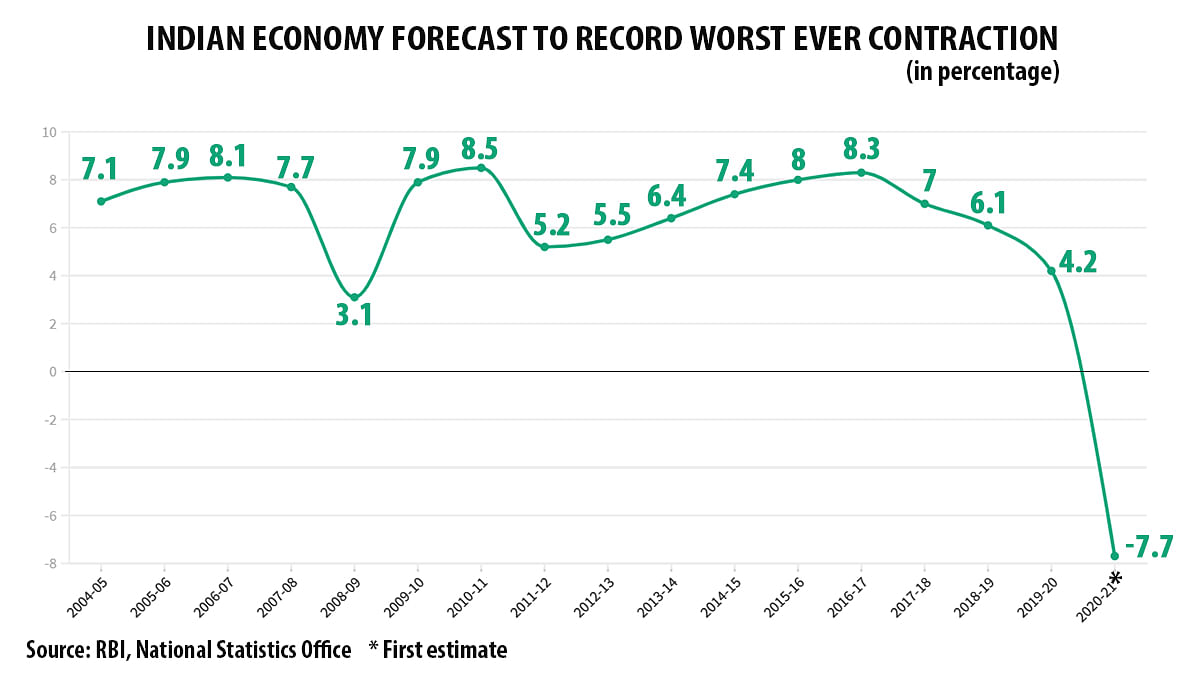
New Delhi: The Indian economy is estimated to report its worst-ever contraction of 7.7 per cent in 2020-21, the National Statistical Office (NSO) said Thursday.
The Indian economy had grown at 4.2 per cent in 2019-20.
The first advance estimates released by the NSO are, however, marginally better than initial estimates released in the first half of the fiscal year when many financial institutions and rating agencies had forecast a double digit contraction for the Indian economy.
In December, the Reserve Bank of India had also marginally improved its growth forecasts for India raising it to -7.5 per cent from its earlier forecast of -9.5 per cent.
While agriculture is forecast to grow at 3.4 per cent in 2020-21, manufacturing and mining and quarrying are expected to contract by 9.4 per cent and 12.4 per cent, respectively.
Trade, hotels, transportation and communication are expected to see the sharpest contraction at 21.4 per cent, followed by construction, which is estimated to decline by 12.6 per cent.
Nominal GDP is forecast to contract by 4.2 per cent to Rs 194.82 lakh crore. Nominal GDP includes the price increases along with real output growth.
These forecasts are released ahead of the budget so as to aid the government’s budget-making exercise. The nominal GDP numbers are crucial for the government to assess its fiscal deficit as a percentage of Gross Domestic Product as well as to make projections of tax collections for the next fiscal year.

Meanwhile, a finance ministry statement said the GDP estimates reflect a resurgence in the economic activity in Q3 and Q4.
“The continuous quarter-on-quarter growth endorses the strength of economic fundamentals of the country to sustain a post-lockdown V-shaped recovery,” the statement added.
Exports, imports also expected to contract
The current fiscal has been a challenging year for the Indian economy as the pandemic and the subsequent lockdown brought all economic activity to a complete halt for two months.
Even after the gradual lifting of lockdown, the services sector, requiring physical customer presence like tourism, hospitality and aviation, is still struggling to inch back to pre-Covid levels.
The agriculture sector has been the only silver lining this fiscal year with the manufacturing sector also registering a partial recovery in the second half of the fiscal year anticipating festival season demand.
While the Indian economy contracted by a record 23.9 per cent in the April-June quarter, the decline was arrested in the July to September quarter when the economy contracted by 7.5 per cent.
Data released by the NSO showed that both private consumption expenditure and gross fixed capital formation are expected to decline in 2020-21 by 5.6 per cent and 13.6 per cent, respectively, and only government final consumption expenditure is expected to register positive growth at 11.4 per cent.
Gross fixed capital formation is an indicator of the investment demand in the economy and has been one of the worst hit along with private consumption.
Exports and imports are also expected to contract in the current fiscal, the data showed.
Subscribe to our channels on YouTube & Telegram
Why news media is in crisis & How you can fix it
India needs free, fair, non-hyphenated and questioning journalism even more as it faces multiple crises.
But the news media is in a crisis of its own. There have been brutal layoffs and pay-cuts. The best of journalism is shrinking, yielding to crude prime-time spectacle.
ThePrint has the finest young reporters, columnists and editors working for it. Sustaining journalism of this quality needs smart and thinking people like you to pay for it. Whether you live in India or overseas, you can do it here.